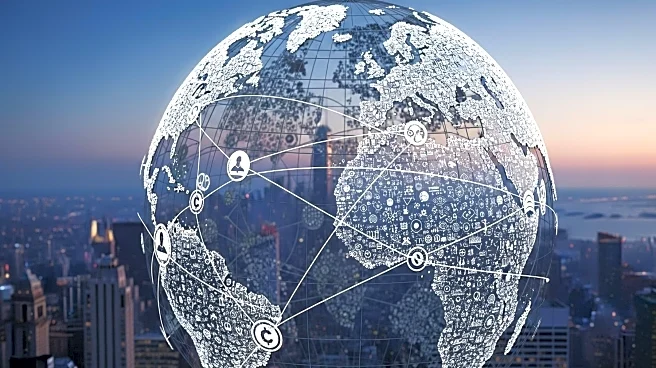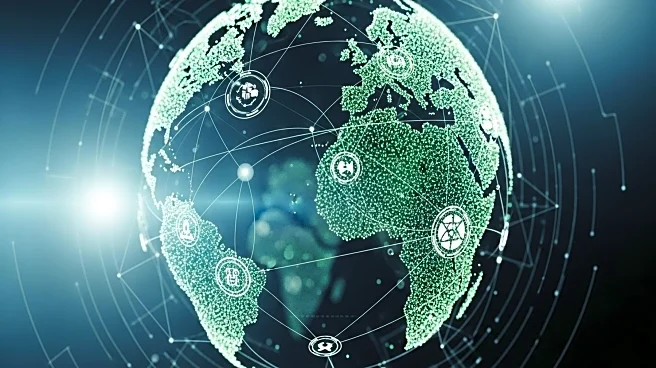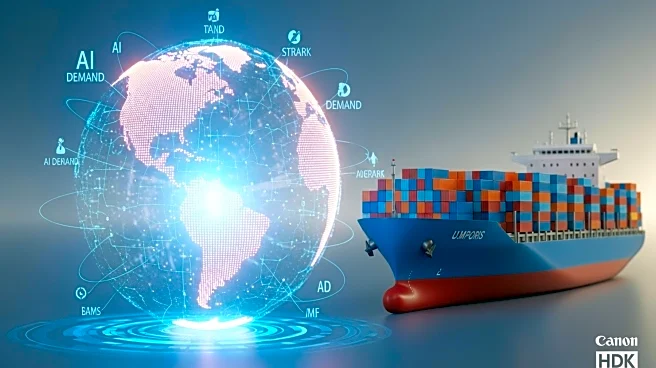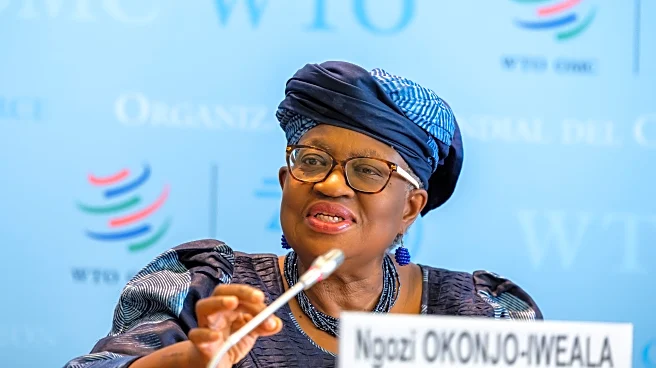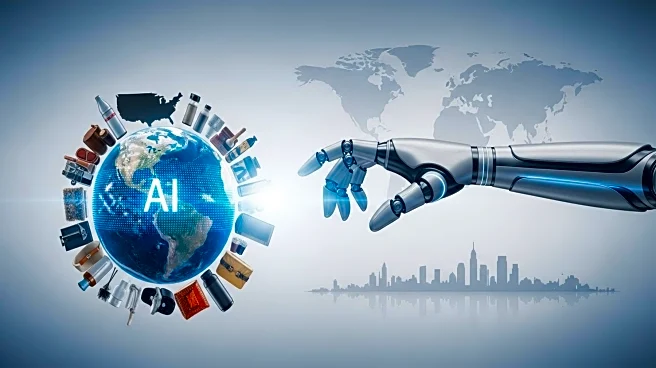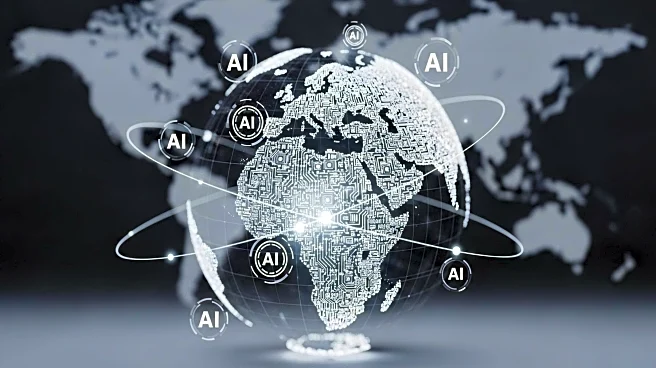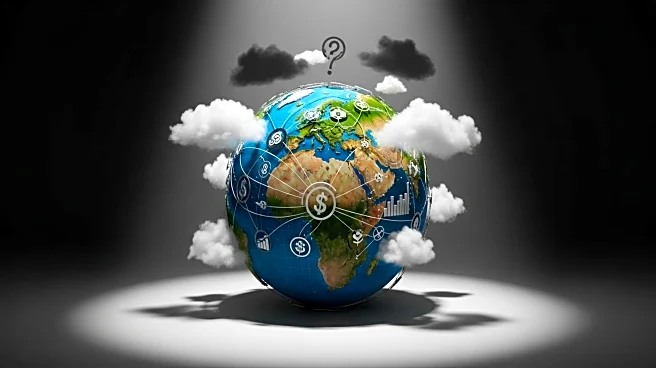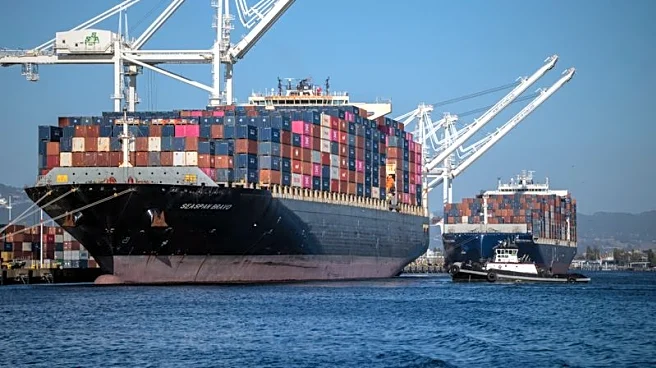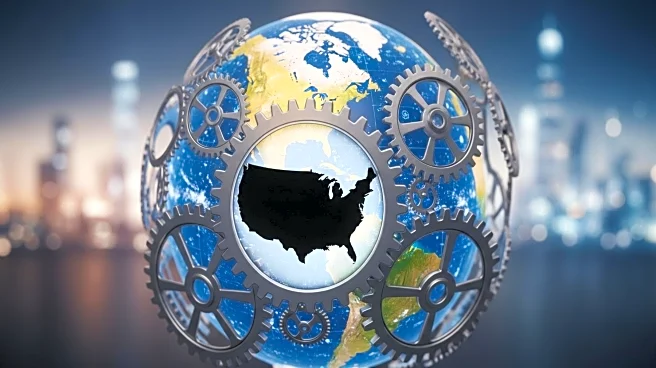What's Happening?
The World Trade Organization (WTO) has significantly increased its forecast for trade growth in goods for the current year, attributing the rise to a surge in artificial intelligence (AI)-related purchases and a spike in U.S. imports. The WTO's revised prediction for merchandise trade growth is now 2.4%, up from an earlier estimate of 0.9%. This adjustment follows an unexpectedly strong first half of the year, driven by robust trade in AI-related goods such as semiconductors, servers, and telecommunications equipment. The WTO also noted that the U.S. has been front-loading imports in anticipation of potential tariff hikes, contributing to record levels of inventories. Director-General Ngozi Okonjo-Iweala highlighted the resilience of trade despite challenges, crediting a measured response to tariffs announced by the Trump administration and increased trade among developing countries.
Why It's Important?
The unexpected rise in trade growth underscores the significant impact of AI-related goods on global commerce, with these products accounting for a substantial portion of the increase. The U.S. economy, in particular, is experiencing a surge in imports, which could have implications for domestic industries and consumer prices. The anticipation of tariff changes has led to strategic import decisions, potentially affecting supply chains and inventory management. The growth in trade among developing countries also highlights shifting dynamics in global trade patterns, with emerging economies playing a more prominent role. This development could influence future trade policies and economic strategies, particularly in the context of ongoing tariff negotiations and geopolitical tensions.
What's Next?
Looking ahead, the WTO has adjusted its forecast for 2026, predicting a slower growth rate of 0.5% for merchandise trade. The organization anticipates continued demand for AI-related goods, which could drive further capital investment and trade growth. However, the potential for future tariff hikes or retaliatory measures remains a concern, as countries navigate complex trade relationships. Stakeholders, including policymakers and businesses, will need to monitor these developments closely to adapt to changing trade environments and mitigate potential risks.

